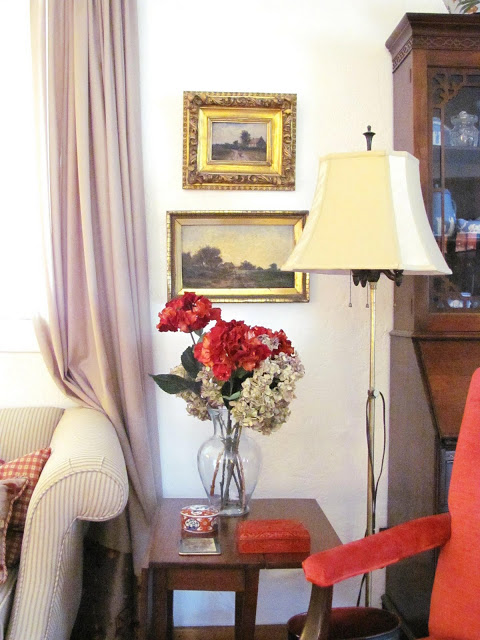You may remember from your American History class that tea in the American colonies was taxed by the British. "Colonists objected to the Tea Act because they believed that it violated their rights as Englishmen to "No taxation without representation," that is, be taxed only by their own elected representatives and not by a British parliament in which they were not represented." Wikipedia This did not mean that the colonists stopped drinking tea. They were mostly immigrants from Britain, or 1st or second generation descendants of immigrants from Britain. Almost every household in the colonies had a tea service whether it was silver for the gentry, china for the merchants, copper or pewter for the poor, or pottery or wood for the slaves. "A cuppa" was de rigueur for all classes. However, after the Boston Tea Party, as revolution became more certain and the boycott of tea more common, the colonists began to consume more of other liquids, most notably coffee and herbal teas. Still, all gracious hostesses served something when afternoon visits took place. Above, in Rosalind's dollhouse the tea table is central to the living room, and a small musical instrument stands ready to entertain the guests.
While we still have frequent tea parties in our family, somehow none of us learned to play an instrument well enough to actually entertain anyone!
 |
| Photos by Camille Snyder |
You will note the desk under the staircase. On a plantation large enough to support such an elegant house, this most likely would have been used by the mistress of the house, and the master would have had a separate office to meet with the plantation manager. The desk has not yet been "dressed" with accessories, so will show that another time.
Here you can see one of the candle sconces on either side of the fireplace that helped to light the living room. (Interesting note: whale oil lamps were beginning to be used in the late 1700's because of their bright and relatively clean light but Rosalind chose to use candles throughout this house. I forgot to ask her if it was because of esthetics or if it was easier to find miniature candle holders.) There is a Japanese Imari vase and plate on the mantle (very common in wealthy homes during the 1700's) and a hand painted oil reproduction by Miniaturist Linda Webster of Claude Monet's The Hoschedes' Garden at Montgeron hanging over the fireplace. Since the original was painted in 1876, I am thinking there might have been a time traveler visiting Williamsburg in the 1700's and peddling his wares.
 |
| The Dining Room |
Here Rosalind used the same wallpaper from Dollhouse Emporium that she used in the living room. I think it is very pretty with this rug. Notice the Jasperware by Wedgewood on the dining table. Rosalind also has a wonderful collection of Jasperware in a much larger scale.
In the photo below you can see a corner of the desk where she keeps some of her collection:
 |
| Photo via The Vintique Object |
 |
| Photo Via The Vintique Object |




I guess it shows that good taste crosses over to all media. I've never seen such a beautifully furnished doll house. I can't believe the gorgeous little rugs. So beautiful.
ReplyDelete